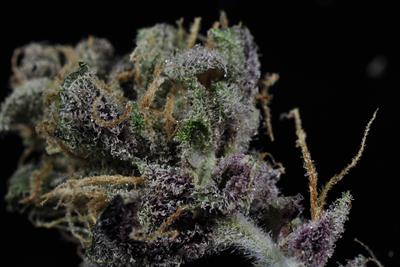
Tuesday September 3, 2019
By Erin Hiatt
 420 Culture
420 Culture
Cannabis is a very complicated plant. Made up of hundreds of chemical compounds called cannabinoids – more than 100 of which have been identified and cause different effects – these cannabinoids bind to receptors already in the body, making up what is called the endocannabinoid system (ECS). Endocannabinoid receptors, called CB1 and CB2, are located all throughout the body, including the brain, nervous system, skeletal muscles, skin, immune system, heart, blood vessels, kidneys, and digestive tract. Different cannabinoids have shown a variety of beneficial effects, ranging from anti-anxiety to weight loss. To help you understand the diversity of cannabinoids in marijuana, let’s take a closer look at these fascinating chemical compounds.
Understanding the Endocannabinoid System
The ECS is in charge of a physiological function called homeostasis, which responds to environmental changes by creating a bodily state of harmony, keeping the body in the “just right” zone. Some of the systems that the ECS helps to balance are mood, sleep, reproduction, memory, temperature regulation, pain, appetite, digestion, immune function, inflammation, motor control, and pleasure. So, basically, just about everything. When bodily systems are out of whack, the ECS signals making them level once again. When cannabis is consumed, ECS receptors CB1 and CB2 are unlocked by cannabinoids, like THC – responsible for the euphoric high – and CBD, believed to have healing qualities.

These are only two cannabinoids found in marijuana, and likely the most studied. But let’s take a look at some of the other cannabinoids of the cannabis plant, all of which act together, in what is called the entourage effect as well as individually. But first things first. The cannabis plant itself does not produce the most famous cannabinoids, THC and CBD, in bulk. There are eight major cannabinoid acids which must be activated, usually through a process called decarboxylation. This naturally occurs during the consumption process when THC’s precursor, THCA, gets heated, usually via smoking or vaping (decarboxylation can also be done in an oven if you’re preparing cannabis for edibles or infusions). A similar scenario is when THC is converted to CBN (cannabinol), which forms after the degradation and oxidation of THC.
Common Cannabinoids Found in Marijuana
The cannabinoids found most frequently in the plant are THCA and CBDA, the precursors to THC and CBD, respectively. But there are many more major and minor cannabinoids.
- THC, or Tetrahydrocannabinol, is derived from its precursor THCA, which occurs after decarboxylation. Responsible for cannabis’ euphoric effects, it travels through the bloodstream to bind to cannabinoid receptors in the body
- CBD goes by the full name cannabidiol, and is thought to contain the most healing benefits. CBD is non-intoxicating, and has even received (very limited) FDA approval in the form of Epidiolex, a cannabis-derived drug intended to treat intractable epilepsy
- A rare cannabinoid called CBG, or cannabigerol is also non-intoxicating. It has been indicated to reduce or kill bacterial growth, promote bone growth, and reduce inflammation
- CBC, also known as cannabichromene, may also play a role in reducing inflammation, and could contribute to cannabis’ antiviral effects
- CBCV, scientifically referred to cannabichromevarin, a variation of CBC, is thought to be an anandamide reuptake inhibitor, though research on this cannabinoid is very limited. What researchers know for sure is that it is non-intoxicating, and may play a role in pain and inflammation reduction, as well as potentially easing symptoms of depression
- CBDV, or cannabidivarin, is a molecular variant of CBD – hence the “v.” Studies on this variant are very nascent, but researchers are studying whether it may help manage epilepsy
- THCA is THC’s precursor and abundant in raw cannabis. High in vitamins and mineral like fiber, iron, and calcium. Juicing raw cannabis can be an alternative for those who seek the nutritional benefits of cannabis, but do not want the high
- CBDA, cannabidiolic acid, is CBD before it gets heated through decarboxylation. Some research has shown that higher concentrations of CBDA have more antimicrobial properties than CBD
- THCV, aka tetrahydrocannabivarin, is another variant, this time on THC. But it is thought that this variation may reduce panic, promote bone growth, and help to reduce appetite. THCV is considered a rare cannabinoid, in fact, it is difficult to find a strain with more than 5 percent THCV at the local dispensary. However, it is thought that African strains, like Durban Poison, may contain the most THCV
- CBN, or cannabinol, is also believed to be non-intoxicating, and is most well-known for its sedative effects. It may also be beneficial for pain relief, inflammation, as an anti-convulsive, appetite stimulant, and antibacterial
Without the pioneering research of Israeli chemist, Raphael Mechoulam, the identification and action of cannabinoids would remain a mystery. Mechoulam was the first to identify THC in 1964. Referred to as the “father of marijuana research,” he and his team of researchers later identified CBD. Mechoulam and NIMH (National Institute of Mental Health) researchers William Devane and Dr. Lumir Hanus worked together to identify the first endocannabinoid, anandamide, in 1992, which led to the breakthrough identification of the endocannabinoid system.
Currently, researchers have identified 113 cannabinoids, but it is believed that there are dozens more waiting to be identified and studied for their various effects.
Do you have a favorite cannabinoid? If so, why? Share your thoughts in the comments below!







